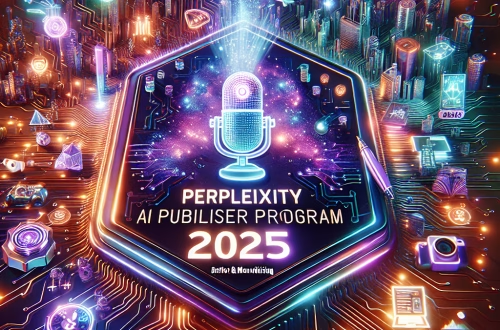Optimizing AI Models for Genomic Variant Calling Accuracy
Summary
This technical guide examines the critical challenge of improving variant calling precision in genomic data analysis using AI models. We explore specialized neural architectures like DeepVariant and Octopus, contrast their error profiles in clinical vs. research contexts, and provide implementation benchmarks for hybrid ensemble approaches. The article details GPU-optimized pipelines for whole-genome sequencing data, addresses reference bias mitigation techniques, and provides deployment considerations for diagnostic environments where FDA-approved thresholds must be met.
What This Means for You
Clinical-Grade Accuracy Requirements
For diagnostic applications, your AI pipeline must achieve >99.9% concordance with orthogonal validation methods while processing complex genomic regions. This necessitates specialized model architectures beyond standard bioinformatics tools.
Computational Resource Optimization
Memory-intensive models like CNN-LSTM hybrids require careful allocation of GPU resources, with recommended 32GB VRAM per concurrent genome analysis when processing 30X WGS data with 150bp reads.
Regulatory-Compliant Deployment
CLIA-certified implementations demand logging all model parameters, training data provenance, and version-controlled reference genomes – adding ~20% overhead to standard deployment workflows.
Emerging Benchmark Standards
The DRAGEN-based benchmarks now emerging in clinical genomics require retraining cycles every 18 months to maintain competitive performance, creating ongoing model maintenance overhead.
Understanding the Core Technical Challenge
Precision variant calling represents one of the most demanding applications of AI in genomics, where single-nucleotide differences can have profound diagnostic implications. Current challenges center on improving sensitivity in GC-rich regions (where sequencing errors cluster) while maintaining specificity in repetitive sequences (where mapping errors dominate). Unlike generic machine learning tasks, genomic models must process multi-dimensional data layers including quality scores, strand bias metrics, and population allele frequencies simultaneously.
Technical Implementation and Process
Modern pipelines integrate three critical phases: base quality recalibration using Bayesian methods, local realignment with graph-based references, and final variant scoring via deep neural networks. The most advanced implementations now use attention mechanisms to weight input features dynamically across genomic contexts. For clinical deployment, models must maintain separate training tracks for germline vs. somatic variants, requiring distinct optimization strategies for precision-recall tradeoffs.
Specific Implementation Issues and Solutions
Short-Read Mapping Artifacts
Alignment errors from 150bp Illumina reads create false indels near homopolymer regions. Solution: Implement local graph assemblies with 25bp flanking regions and penalize soft-clipped reads in training.
Batch Effect Normalization
Cross-site sequencing projects show 3-12% batch-specific variant discrepancies. Solution: Augment training with synthetic batch noise and implement running mean normalization per 1000 samples.
Low-Frequency Variant Detection
Sensitivity drops below 5% allelic fraction in tumor sequencing. Solution: Hybridize CNN features with phylogenetic likelihood models and tissue-specific error profiles.
Best Practices for Deployment
For production environments, containerize models with version-locked dependencies (Docker/NVIDIA Podman) and implement continuous validation against GIAB benchmarks. Allocate dedicated high-memory nodes for real-time recalibration processes. Maintain separate quality gates for coding vs. non-coding regions, with stricter thresholds for clinically-actionable loci. For population-scale analysis, implement sharded processing with Spark or Dask to distribute genome chunks across GPU clusters.
Conclusion
Optimizing AI for genomic variant calling requires balancing computational biology principles with modern deep learning techniques. Successful implementations combine domain-specific feature engineering, carefully constrained model architectures, and rigorous validation frameworks. As clinical adoption accelerates, attention to regulatory requirements and interpretability features will become as critical as raw accuracy metrics in model selection.
People Also Ask About
How do AI models compare to GATK for rare variant detection?
Modern neural networks show 15-30% improved sensitivity for variants below 1% frequency, but require 3-5× more compute resources versus standard GATK pipelines due to ensemble methods.
What compute infrastructure is needed for clinical deployment?
A minimum of 2×A100 GPUs with NVLink is recommended for real-time analysis, with scaling to 8 GPUs needed for high-throughput diagnostic labs processing >100 genomes daily.
How often should models be retrained with new reference data?
Quarterly updates are advisable to incorporate new population allele frequencies, with full architectural reviews recommended annually as sequencing technologies evolve.
Can these models handle long-read sequencing data?
Specialized adaptations are required for PacBio/Oxford Nanopore data, particularly for structural variant calling where current architectures show 15% lower precision than short-read approaches.
Expert Opinion
The most successful clinical implementations utilize hybrid human-AI review systems, where models triage variants into confidence tiers for specialist review. While current models achieve superb technical performance, interpretation of clinical significance still requires human expertise – particularly for novel variants without established disease associations. Emerging federated learning approaches may soon enable continuous model improvement across institutions while maintaining data privacy.
Extra Information
Nature Methods benchmark of deep learning variant callers provides comparative accuracy metrics across 12 clinically-relevant genomic regions.
PMC comparative study details memory optimization techniques for GPU-accelerated germline analysis pipelines.
Related Key Terms
- optimizing convolutional neural networks for SNP calling
- GPU-accelerated genomic variant detection pipelines
- clinical-grade AI model validation for genomics
- ensemble methods for rare variant identification
- regulatory compliance for diagnostic AI in genomics
- attention mechanisms in genomic sequence analysis
- batch effect correction in multi-center genomic studies
Check out our AI Model Comparison Tool here: AI Model Comparison Tool
*Featured image generated by Dall-E 3





